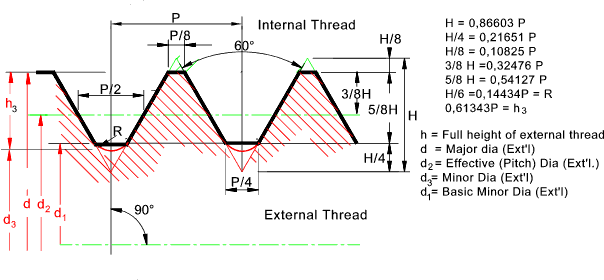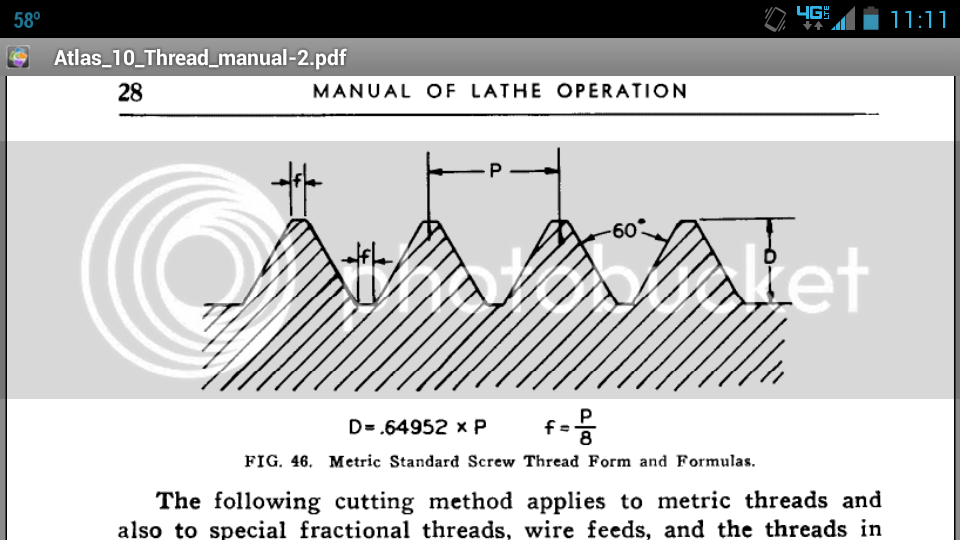JAndrew
Well-Known Member
- Joined
- Aug 9, 2013
- Messages
- 113
- Reaction score
- 21
HMEM,
I've run into a threading calculation that I can't find a straight answer to online. I need to cut 50mmx1.5mm external threads for my ER-40 collet chuck. More info in this thread: http://www.homemodelenginemachinist.com/f13/spindle-threaded-er-40-collet-chuck-atlas-22149/
When I cut the NC threads there was a nice little chart in the Atlas threading manual stating the "depth of single cut" and most importantly the "compound feed" value. I can't seem to find a chart like this anywhere for metric threads!
I can figure out the "single depth of cut" using the equation in the Atlas threading manual but don't know how to proceed from there. It doesn't seem to be listed anywhere online...? Am i missing something? Maybe I'm not supposed to be feeding the compound in at 29.5 degrees for metric threads? I'm pretty sure I am.
I think it could be calculated with some kind of Sin/Cos/Tan equation but I put pencil to paper and don't know if I'm even getting close.
Thanks in advance!
-J.Andrew
I've run into a threading calculation that I can't find a straight answer to online. I need to cut 50mmx1.5mm external threads for my ER-40 collet chuck. More info in this thread: http://www.homemodelenginemachinist.com/f13/spindle-threaded-er-40-collet-chuck-atlas-22149/
When I cut the NC threads there was a nice little chart in the Atlas threading manual stating the "depth of single cut" and most importantly the "compound feed" value. I can't seem to find a chart like this anywhere for metric threads!
I can figure out the "single depth of cut" using the equation in the Atlas threading manual but don't know how to proceed from there. It doesn't seem to be listed anywhere online...? Am i missing something? Maybe I'm not supposed to be feeding the compound in at 29.5 degrees for metric threads? I'm pretty sure I am.
I think it could be calculated with some kind of Sin/Cos/Tan equation but I put pencil to paper and don't know if I'm even getting close.
Thanks in advance!
-J.Andrew






